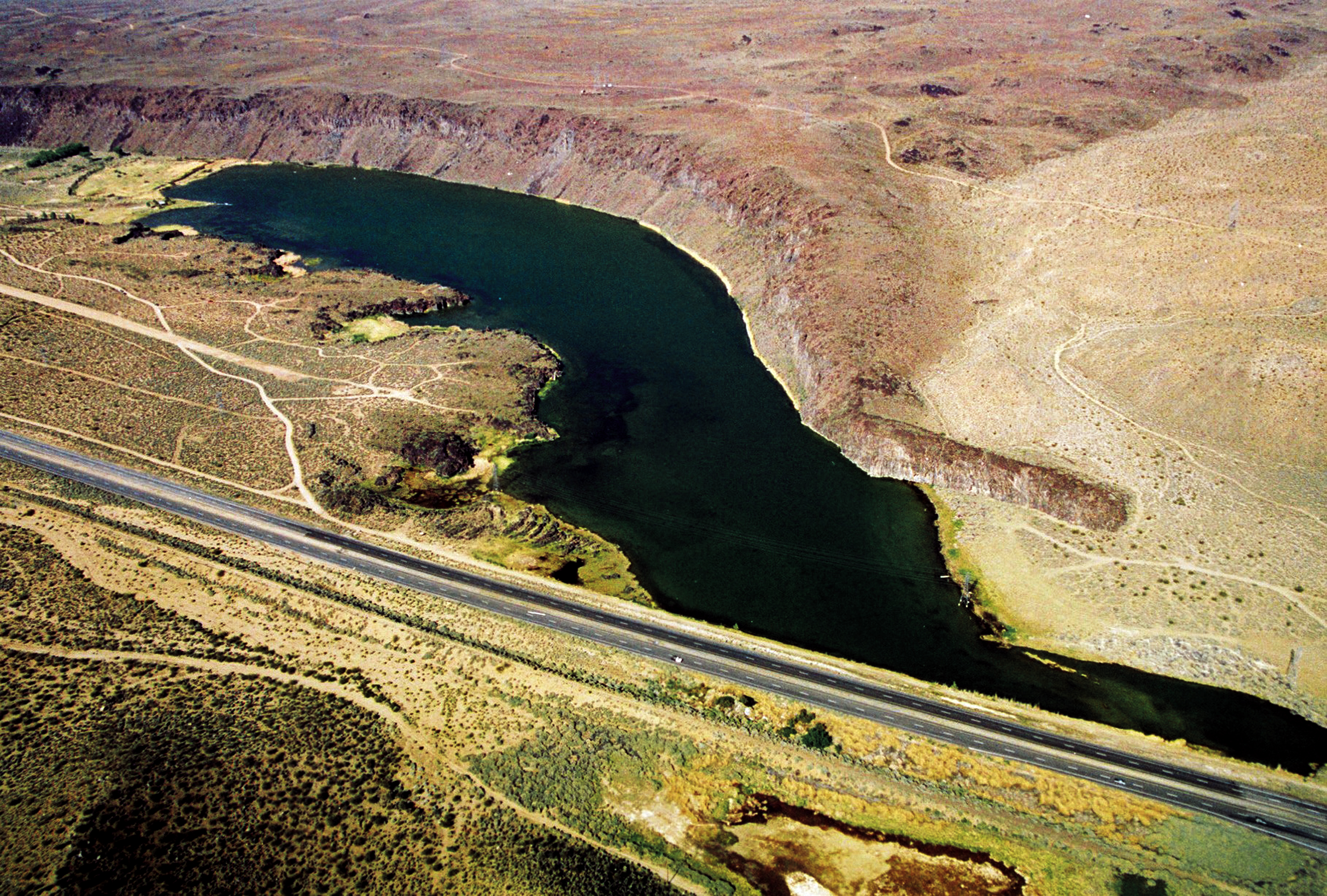Rock Art Archive research culminates in upcoming book “Captured Visions”

Little Lake in Owens Valley, once used as a campground and trading post for multiple Native American tribes, has examples of rock art found by UCLA volunteers. (courtesy of Deidre Whitmore)
By Nicole Arulanantham
Jan. 12, 2011 12:05 a.m.

This image of Owens Valley is the cover of the book “Captured Visions.” (courtesy of Deidre Whitmore)
Gordon Hull was walking with a group of UCLA volunteers in the Mojave Desert when they came to a steep, rocky surface covered in thousands of sketches.
One of these drawings, a lone sheep, caught Hull’s eye. He had seen many similar sketches before, but this was one of few along the shore of Little Lake in Owens Valley.
Lack of any other sheep among the drawings meant that there were many tribes that contributed to the illustrations at this site. The 1997 discovery led the group to believe that the area they were standing in had been used as a campground and trading post for multiple Native American tribes.
The group accompanying Hull was from the Rock Art Archive in UCLA’s Cotsen Institute of Archaeology. Their research will be featured in the archive’s book “Captured Visions,” set for release at the end of this year.
Hull is one of three co-authors of the upcoming publication, which is based on six weeks of research done over a period of six years.
The publication marks the first time the archive has designed and released a book without outside help. Run by about 30 volunteers since 1997, the archive has become a hobby for a diverse group of people whose varied skills were employed for the creation of the project.
Among the volunteers who first visited the Little Lake site was Tony Hull, an astronomer who designed a camera for the Hubble Space Telescope. Other volunteers were graphic designers and worked on the layout of the book.
“(The research in the archive) is very, very important material but very inaccessible,” said archive director Jo Anne Van Tilburg. “Hopefully the book will encourage more people to use the resources that are on campus.”
When the archive opened in 1977, archaeologists did not emphasize discoveries of rock art.
Gordon Hull, a computer analyst for the archive, said the California state government mandated documentation of these findings, but the records were brief and rarely accompanied by quality photographs of the art.
Today, however, the archive contains thousands of site records, photos and unpublished articles, much of which is available to the public. The archive is responsible for all of the rock art in California and also contains samples from around the world.
“We have a couple thousand sites, and (the archive) grows all the time,” Gordon Hull said. “When I started working here, they didn’t care about rock art, but now they document it much more thoroughly.”
The only paid employees at the archive are work-study students, such as fourth-year anthropology student Deidre Whitmore.
Whitmore began working there two years ago as a graphic designer. While she was unsure about career possibilities within the field of archaeology, she said working with the archaeologists at the institute helped to ease her mind.
“I really have the archive to thank for the rest of my life,” Whitmore said. “I know that I love (archaeology) enough to fight for a job.”
Third-year art history student Amanda Spradling also works at the archive and is also considering archaeology as a career. Currently, Spradling’s job includes restoring black and white photos of rock art. She said the key part of this task is making sure the photos look as natural as possible.
“What I like about my job is the before and after,” Spradling said. “I’ll maybe go into conservation, which is the same thing (as my current job) but with physical things like sculptures and paintings.”
Records from the site cannot be accessed by non-researchers to prevent rock art from vandalism, but the pictures and unpublished articles in the archive are available for public use. There is a fee for photos that are intended for publications, but material for personal use is accessible free of charge.


